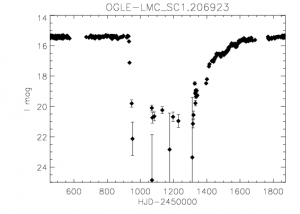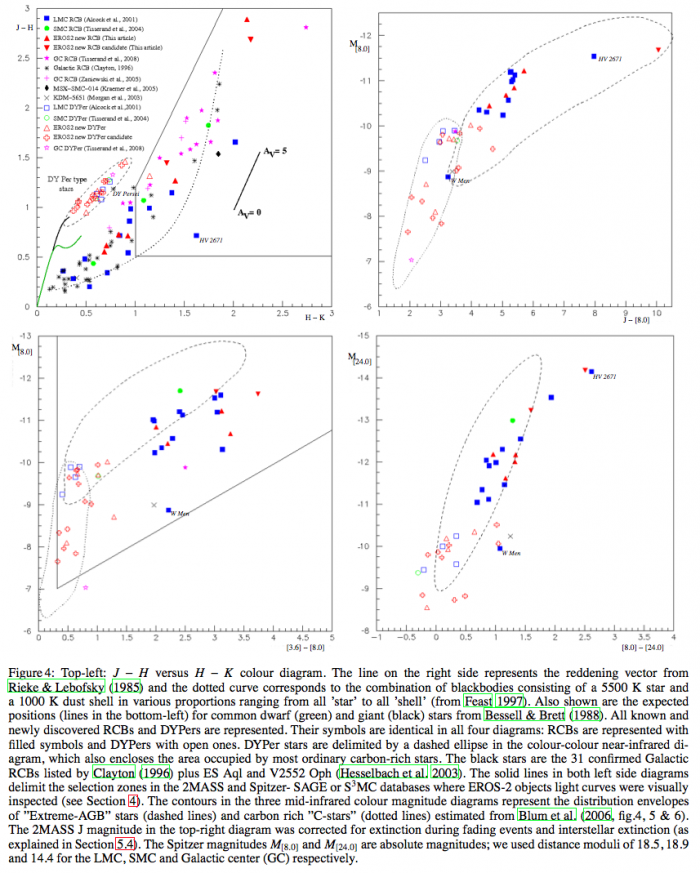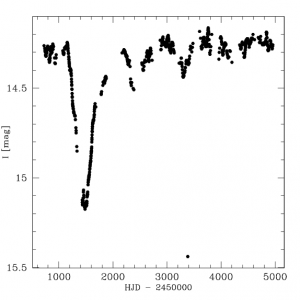Triggers:RCrB
From Gaia Science Alerts Working Group
Jump to navigationJump to searchR Corona Borealis stars
Only around 50 known in the Galaxy and Magellanic Clouds. They are rare type of evolved carbon-rich supergiants that are thought to result from the merger of two white dwarfs, called the Double Degenerate (DD) scenario. This scenario is also studied in context of SN Ia explosions, therefore better understanding of RCrB stars is crucial. Tisserand et al. 2009
Characteristics:
- sudden and non-periodic drops in magnitude
- drops by up to 9 magnitudes
- some small variation in the baseline
- the "dark" stage can last from days to years
- recovers slowly to the baseline
- fading rate: 0.04 mag/day
- absolute magnitude range: M_V=-5.2 to -3.4 mag
- 0 < V-I < 2
- near-infrared excess: between 0 and 3 in J-H and H-K
DY Persei
These are another Carbon stars. Their drops in magnitude are much smaller than in RCrBs and seem to be periodical (P~1000d).
- their distributions match those of typical carbon stars (type N)
- fading rate: 0.01 mag/day
- absolute magnitude range: M_V=-3 to -1.8 mag
- V-I > 1.5


